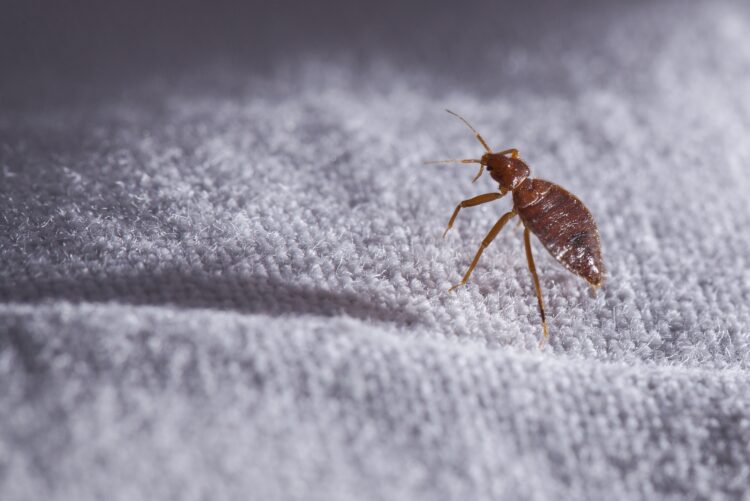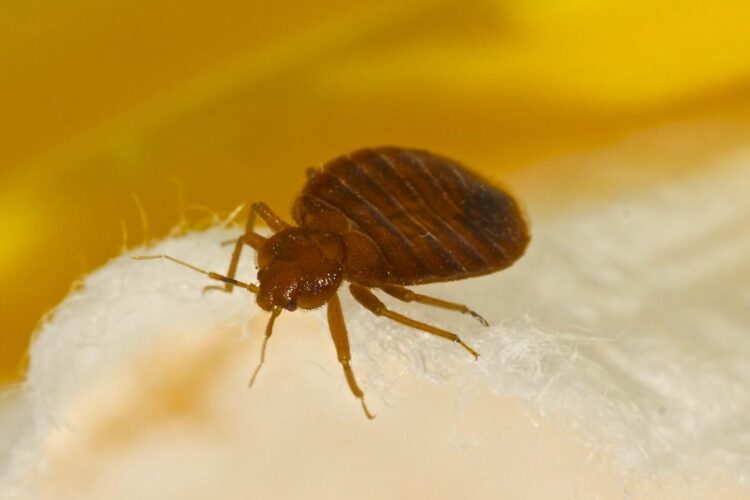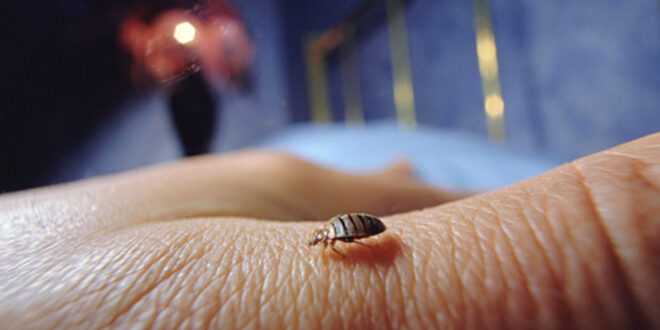Bed bugs lurk in the crevices and feed on human blood. Although they do not transmit disease and are not dangerous, these parasites can cause itching. However, they usually leave no trace and you can understand that they are present only when you see them with your eyes. Also, they are usually very difficult to exterminate.
How do bed bugs look?

They are flat, rounded and reddish-brown in color and are only 7 millimeters in size. The ones that most commonly attack people are Latin name Cimex lectularius.
These bugs do not have wings and cannot fly or jump, but their thin body shape allows them to hide for months without being noticed at all. They can be hidden in the cracks of luggage, bags, furniture, beds, and clothing. Those that feed on human blood can go up to 30 meters during the night, and usually attack the host while sleeping. They can suck in so much blood for 10 minutes that they are still for days. Most often they attack parts of the body that are stripped naked, such as the face, neck, and arms.
Interestingly, scientists have discovered that these organisms have favorite colors. They prefer black and red spots and avoid the ones that are yellow or green. They have also been found to be attracted to heat, moisture and carbon dioxide.
They are, however, very difficult to detect. They leave behind no obvious bite by which they can be identified. The bites themselves are not a big problem, but there may be problems for those who are allergic.
Bed bugs throughout history

The remains of bed bugs have been found even in the tombs of Egypt’s mummified pharaohs, showing that humans were aware of them even more than four thousand years ago. Nevertheless, it is assumed that the bed bug evolved from a species that parasites on bats and made the transition from bats to humans even at a time when prehistoric humans lived in caves. The fact that they have remained with us from civilizational beginnings until the modern age shows us that they have a tremendous power of adaptation and that humanity will not be so easily rid of them.
In the aftermath of World War II, synthetic insecticides, combined with better living conditions and better housing construction, have led to a dramatic decline in bed bug populations across Europe and other developed countries around the world. The population remained at a very low level for the next 50 years until the beginning of the 21st century, after which there was a huge increase in the incidence of infestations across Europe, Asia, Australia, and the Americas. The return in so many is probably the culmination of several factors related to their survival, reproduction, and spread. Failed treatments resulting from the improper and frivolous implementation of pest control measures and programs have only contributed to the enormous increase in this problem.
When they bite?
They are dormant during the day which makes them very difficult to find and is active at night when there is no light or vibration. Then they go out of their hiding places, go on the attack and suck in the blood of the host. They feed for three to ten minutes until they have collected enough blood to stay still for days and then withdraw seamlessly. Interestingly, they are drawn to exhaled carbon dioxide. They are able to detect the difference between the amount of carbon dioxide a person releases during sleep or when awake.
They inject an anticoagulant that prevents blood clotting but also a substance that causes numbness to make the sting painless. At the point of stabbing, the person feels an uncomfortable itching. As Defender Pest Control advises, if you wake up and feel itching and don’t know the cause, it’s a good time to call a professional for help.
They are very resilient. They can survive without food for half a year and hibernate at temperatures below 15 C. They can hibernate for up to two years.
How to get rid of them?

Since the bites do not say much about the presence of these bugs, the only proof that they are present is to spot them. Try looking for them in the cracks of the mattress. You may be able to find the remnants of their skin that remain after they die. They can also leave tiny drops of blood on your mattress or furniture.
They have no preference for clean or dirty which means they can be found even in luxury hotels. However, the places that are most vulnerable to attack are places where a large number of people live, such as student dormitories, apartment complexes, hotels, and shelters.
Properly maintaining the room can help reduce the locations of the hiding places, but it is considered that the best solution is to regularly look for signs of their presence.
If you suspect the presence of bed bugs, experts recommend finding a professional exterminator who has experience with bed bugs. They usually use insecticides but also some non-chemical methods such as heating the room to 50 ° C, which is deadly to bed bugs. Freezing infected clothing or items at -18 ° C can also kill bed bugs. However, infected mattresses are best thrown away.
Prevention

It is almost impossible to completely protect an object from the entry of bed bugs, but some measures can be taken to insure that it is timely identified and eliminated to save significant time and money.
In the hospitality industry, the importance of being proactive and ready to fight bed bugs has never been more significant. Negative media attention and lawsuits as a result of bed bug infestation pose a huge threat to hotels and other catering facilities. Nowadays with the availability of internet and smartphones almost all around us, upset hotel guests need a minute to spread the news about hotel infestation to numerous hotel review sites and other forums, which could have dire consequences for the business in the future.
For the purpose of early detection of infestations, there are specific bed bug monitoring traps that are intended solely for their detection. Regular monitoring and examination can determine early on the infestation that can be resolved with a single treatment.
Conclusion:
It is important that chemical treatments are performed by people trained in pest control who can best evaluate the method of application, the choice of the most effective preparation, as well as identify the potential places of hiding. Very often more than one treatment is required.
Bed bugs are a growing problem in the world, and with the popularization of tourism and the increasing population migration, it is a matter of day before they will even get into our beds. All we can do is welcome them with already developed defense strategies and an active monitoring system.
 Hi Boox Popular Magazine 2024
Hi Boox Popular Magazine 2024



